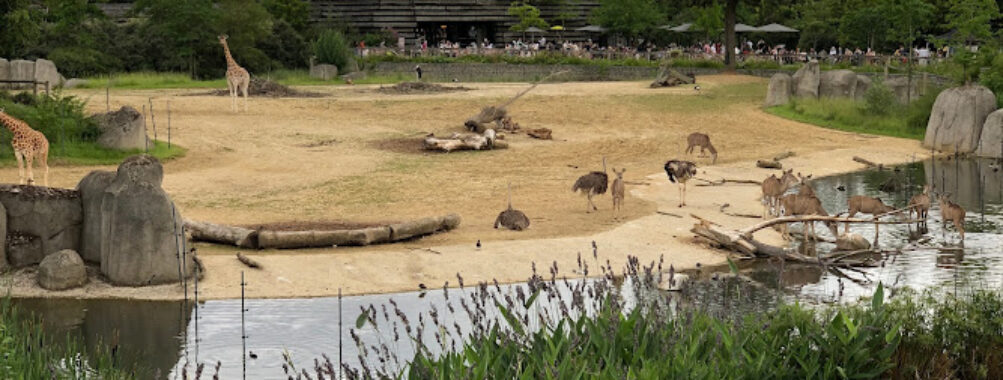
Parc zoologique de Paris
Table of Contents
Description
Let me tell you about one of Paris’s most fascinating attractions – the Parc zoologique de Paris. As someone who’s always been drawn to unique wildlife experiences, I was genuinely impressed by how this zoo reimagines the traditional animal park concept. The 14.5-hectare space masterfully blends modern zoological practices with an immersive visitor experience.
What really caught my eye during my visits was how the zoo divides into five distinct biozones – each carefully designed to mirror the animals’ natural habitats. You’ll find yourself wandering through Patagonia, Sahel-Sudan, Europe, Amazon-Guyana, and Madagascar sections. And let me tell you, watching the giraffes stride across their savannah habitat against the backdrop of Paris is quite something!
The zoo’s commitment to conservation and education really shines through in their setup. Instead of traditional cages, you’ll see naturalistic environments that give the animals space to behave as they would in the wild. I particularly love their innovative greenhouse spaces that maintain perfect conditions for tropical species – it’s like stepping into another world entirely.
Key Features
• The iconic Grand Rocher – that 65-meter artificial rock that’s been the zoo’s symbol since 1934
• 5 immersive biozones showcasing over 180 species
• Specially designed viewing areas that let you observe animals without disturbing them
• Modern veterinary facilities ensuring top-notch animal care
• Educational programs and interactive learning stations
• Dedicated spaces for endangered species conservation
• Climate-controlled environments for species from various climates
• Regular feeding demonstrations and keeper talks
• Children’s discovery zones and hands-on learning areas
• Accessible pathways throughout the park
Best Time to Visit
From my experience, timing your visit right can make a huge difference. Spring (April-May) and early fall (September-October) offer the perfect weather conditions – not too hot or cold – when the animals are most active. The mornings, right after opening time, tend to be less crowded and the animals are usually more energetic.
If you’re visiting in summer, try to arrive early to beat both the crowds and the heat. Winter visits have their own charm – many animals actually become more active in cooler weather, and you’ll find significantly fewer visitors. Plus, the indoor exhibits provide warm refuge on chilly days.
How to Get There
Getting to the Parc zoologique is pretty straightforward using Paris’s excellent public transport system. The Metro is your best bet – take Line 8 to Porte Dorée station, and you’re just a short walk away. Alternatively, hop on Bus 46, 86, or 325, which all stop nearby.
If you’re driving (though I wouldn’t really recommend it in Paris), there’s parking available, but spaces can be limited during peak times. Honestly, public transport is the way to go – it’s cheaper and usually faster than dealing with Paris traffic.
Tips for Visiting
Here’s what I’ve learned from my visits that might help you make the most of your time:
1. Buy your tickets online beforehand – the queues can get pretty long, especially during weekends and holidays.
2. Download the zoo’s app before your visit – it’s super helpful for navigation and includes cool info about the animals.
3. Plan for at least 3-4 hours to see everything properly. I usually spend closer to 5 hours when I bring my camera along.
4. Check the feeding schedule when you arrive – these sessions are fantastic opportunities to see the animals at their most active.
5. Bring water and snacks. While there are cafes on-site, they can be pricey and busy during peak times.
6. Wear comfortable walking shoes – you’ll be doing quite a bit of walking on various surfaces.
7. If you’re visiting with kids, head to the children’s area during off-peak hours to avoid the crowds.
8. The best photos are usually in the morning or late afternoon when the animals are most active.
9. Don’t skip the Madagascar biozone – it’s often less crowded but houses some fascinating species.
10. Consider visiting during light rain – many animals become more active, and the crowds thin out significantly.
Remember that while the zoo is open year-round, some exhibits might be closed for maintenance or animal welfare reasons. Also, many of the animals have indoor areas where they can retreat if they choose, so sometimes patience is key. But trust me, the wait is usually worth it – especially when you get to see those magnificent giraffes strutting across their savannah habitat!
Location
Places to Stay Near Parc zoologique de Paris
Find and Book a Tour
Explore More Travel Guides
No reviews found! Be the first to review!